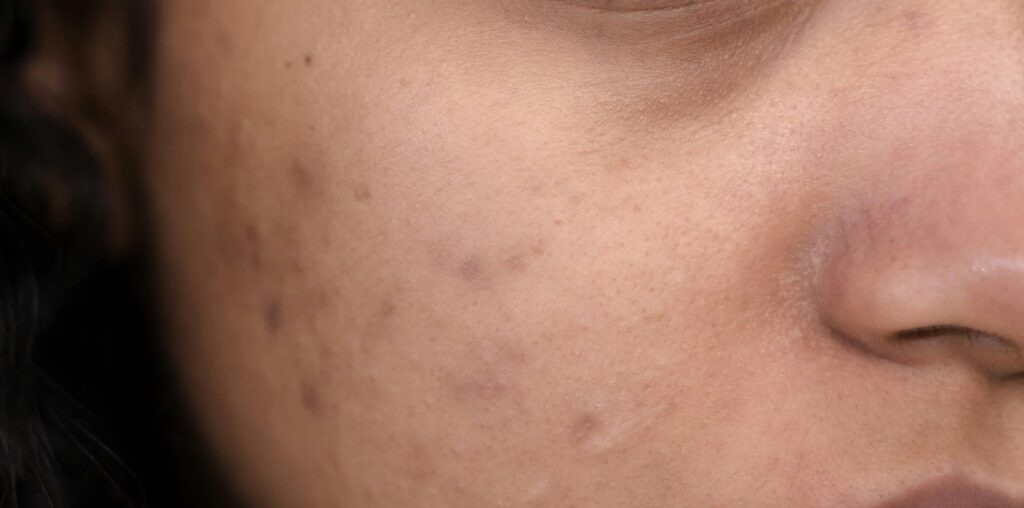Acne can leave more than just emotional scars; it can also cause visible marks on your skin that can be difficult to get rid of. While there are various treatments available, one of the most effective and popular methods for reducing acne scars is microneedling. This treatment is gaining attention for its ability to promote skin renewal and give a fresh, smooth appearance. But how exactly does microneedling work for acne scars, and is it right for you? Let’s dive in.
What is Microneedling?
Microneedling, also known as collagen induction therapy, involves using a device that contains tiny needles. These needles create micro-injuries on the skin’s surface, which stimulates the skin’s healing process. The tiny punctures encourage the production of collagen and elastin, two important proteins that help keep the skin firm, smooth, and youthful.
While microneedling is commonly used to treat a variety of skin concerns, it has become a go-to treatment for acne scars. By stimulating collagen in the skin, microneedling helps improve the texture and tone of the skin, making scars less noticeable over time.
How Microneedling Helps with Acne Scars
Acne scars occur when acne affects the skin deeply, causing damage to the tissue. As the skin heals, it often leaves behind scars that can be either raised or indented. Microneedling helps address these scars by promoting the skin’s natural healing process, which leads to smoother and more even skin.
1. Boosts Collagen Production
One of the primary reasons microneedling is so effective for acne scars is that it boosts collagen production. Collagen is a protein that helps skin stay firm and smooth. When microneedling creates tiny punctures in the skin, it triggers the body’s natural healing process, increasing collagen production. This, in turn, helps fill in indentations caused by scars, making them less noticeable.
2. Improves Skin Texture and Tone
Microneedling not only helps reduce acne scars but also improves the overall texture and tone of your skin. By stimulating collagen, microneedling can make your skin look smoother and more even. If you have uneven skin tone or texture due to acne, microneedling can help restore balance, making your skin appear healthier and fresher.
3. Reduces the Appearance of Pitted Scars
Pitted scars, also known as ice pick or boxcar scars, can be particularly challenging to treat. These scars occur when the skin is deeply damaged during the healing process of acne. Microneedling is especially effective for pitted scars because it helps break down the scar tissue and encourages the production of fresh, new skin. Over time, the texture of the scar improves, and it becomes less pronounced.
The Microneedling Procedure for Acne Scars
During a microneedling session, a licensed professional uses a device that contains fine needles to create small punctures on the surface of your skin. The depth of the needles can be adjusted depending on the severity of your acne scars and the area being treated.
Before the procedure, a numbing cream is applied to your skin to minimize any discomfort. The actual procedure typically takes about 30 minutes, and most people find it relatively painless. After the treatment, your skin may appear red or slightly irritated, similar to a mild sunburn. This usually subsides within a few days.
While results can be seen after just one session, multiple treatments are usually required for optimal results. Typically, about 3 to 6 sessions are needed, spaced about four to six weeks apart, to achieve the best outcome.
Benefits of Microneedling for Acne Scars
Microneedling has become a popular choice for treating acne scars due to its many benefits. Here are some of the main advantages:
1. Non-Surgical Treatment
Microneedling is a non-invasive procedure, which means there’s no need for surgery or significant downtime. You can get the treatment and return to your daily activities soon after. The recovery time is minimal compared to other procedures like laser treatments or chemical peels.
2. Safe for Most Skin Types
Unlike some other treatments, microneedling is safe for all skin types. Whether you have sensitive or darker skin, microneedling can help reduce acne scars without causing hyperpigmentation or irritation, as long as it’s done correctly by a professional.
3. Minimal Downtime
Although your skin may appear red or slightly swollen after the procedure, most people find the downtime to be minimal. You can usually return to your normal skincare routine within a few days. This makes microneedling a convenient option for those with busy schedules.
4. Long-Lasting Results
The results of microneedling can last for months, as it continues to stimulate collagen production long after the treatment. Unlike some other treatments, microneedling provides a long-term solution to acne scars by addressing the root cause of the problem—lack of collagen.
Is Microneedling Right for You?
While microneedling is a highly effective treatment for acne scars, it may not be suitable for everyone. Here are some factors to consider when deciding if microneedling is right for you:
1. Type of Acne Scars
Microneedling works best for certain types of acne scars, especially atrophic (depressed) scars, such as ice pick, boxcar, or rolling scars. If you have raised scars or keloid scars, microneedling may not be as effective, and you may need to explore other treatment options.
2. Skin Sensitivity
If you have highly sensitive skin or conditions like active acne, eczema, or psoriasis, microneedling may not be the best option for you. It’s important to consult with a skincare professional to determine whether microneedling is safe for your skin.
3. Patience for Results
While microneedling is effective, it’s not a quick fix. You’ll need to commit to a series of treatments over time to see the best results. If you’re looking for an immediate solution, microneedling may not be the right choice.
Conclusion
Microneedling is a game-changer for acne scars, offering a non-invasive, effective solution to reduce their appearance and improve skin texture. By stimulating collagen production, it helps fill in depressions, smooths rough patches, and evens out skin tone. With minimal downtime and long-lasting results, microneedling is an excellent choice for many people looking to renew their skin after acne.
If you’ve struggled with acne scars and are looking for a treatment that works, microneedling could be the answer. As with any skin treatment, it’s important to consult with a professional to see if it’s the best option for your specific needs. With patience and consistent treatments, you can enjoy smoother, clearer skin that boosts your confidence.




